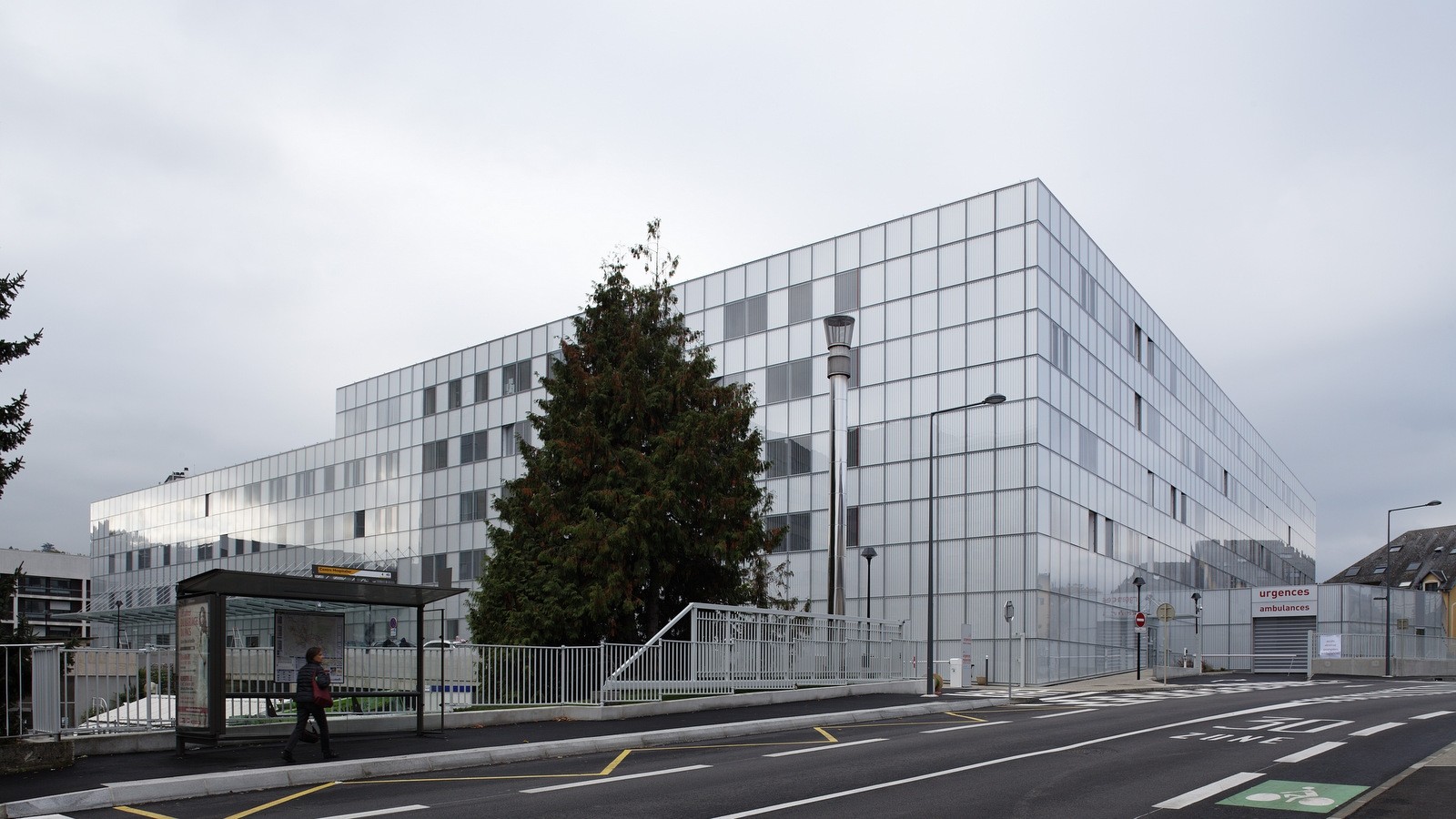The management of the Chambéry hospital made an important strategic choice in setting up its new facility within the dense confines of its current hospital site. It was a question of taking advantage of one of the last land opportunities occupied by the old maternity hospital to "shoehorn" a building with 671 beds and places.
The old Jacques Dorstter hospital tower disappears today to make way for a large esplanade open to the city.
Here the imposing urban volume must contort itself around the mother and child center with which it is at one with and against the property limits delimiting the suburban neighborhood of Faubourg du Mâcher.
If the fundamentals of the monospace are applied, the land pressure has caused the inflection that the building presents in its middle, like the Borghese Palace in Rome.
Like that Palace, this figure demonstrates that the hospital is not necessarily a rectangle.
The program includes a large proportion of ambulatory activities, and it alone outlines what the French hospital of tomorrow will probably become.
The monolithic nature of the building originates from the desire to offer the hospital a simple, flexible, evolving and durable facility. The architecture does not reside in a flight of form, nor in an ordering of full and empty spaces, nor in a graphic composition of windows, but in the urban strength of the volume and the treatment of its "skin" (color, material, reflection, light, etc).
The facades are a singular revelator of the distant landscape. Singular by their stereoscopic effect because the image perceived in an axis of vision is different from that received from another. Singular still by their kinetic effect since during the displacement of the observer, the frontage returns an image of the context always different.
The network of vertical serigraphy of the exterior glass, on the visual parts as well as on the blind parts, participates in the visual homogenization of the facades, it catches the light and produces the effect of a "soft" continuous veil like a curtain drawn around the building.
The interior architecture meets the standards of the high end hotel industry. Despite the immensity of the program, no detail is left to chance.
The interior space is organized around a sculpted "street" axis at the heart of the facility. In the center of this artery, a large covered atrium reveals the consultation center on its 5 floors.
Brunet Saunier Architecture ©

